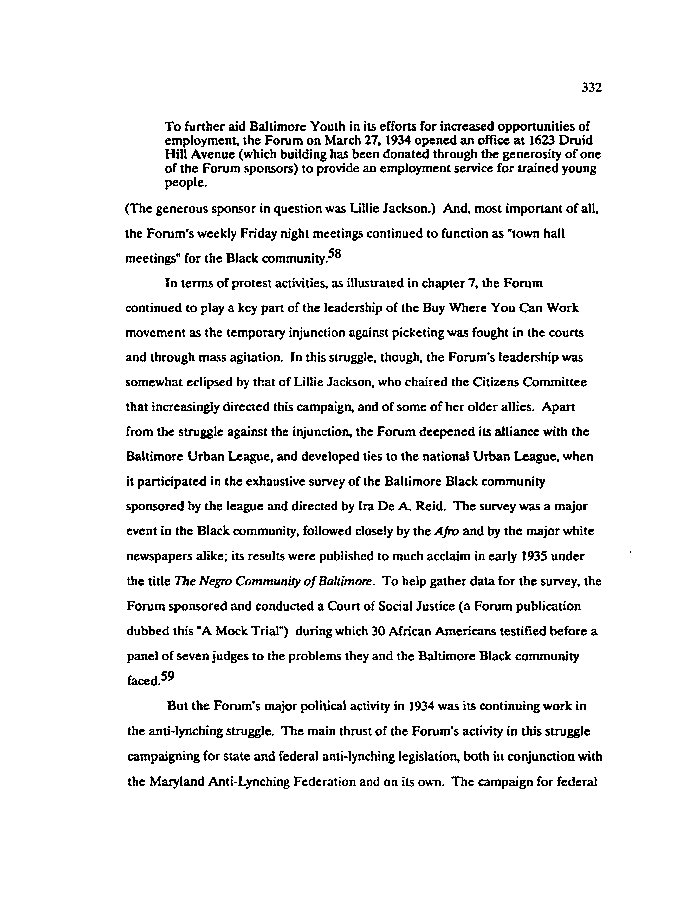|
332
To further aid Baltimore Youth in its efforts for increased opportunities of
employment, the Forum on March 27,1934 opened an office at 1623 Druid
Hill Avenue (which building has been donated through the generosity of one
of the Forum sponsors) to provide an employment service for trained young
people.
(The generous sponsor in question was Lillie Jackson.) And, most important of all,
the Forum's weekly Friday night meetings continued to function as "town hall
meetings" for the Black community.5**
In terms of protest activities, as illustrated in chapter 7, the Forum
continued to play a key part of the leadership of the Buy Where You Can Work
movement as the temporary injunction against picketing was fought in the courts
and through mass agitation. In this struggle, though, the Forum's leadership was
somewhat eclipsed by that of Lillie Jackson, who chaired the Citizens Committee
that increasingly directed this campaign, and of some of her older allies. Apart
from the struggle against the injunction, the Forum deepened its alliance with the
Baltimore Urban League, and developed ties to the national Urban League, when
it participated in the exhaustive survey of the Baltimore Black community
sponsored by the league and directed by Ira De A. Reid. The survey was a major
event in the Black community, followed closely by the Afro and by the major white
newspapers alike; its results were published to much acclaim in early 1935 under
the title The Negro Community of Baltimore. To help gather data for the survey, the
Forum sponsored and conducted a Court of Social Justice (a Forum publication
dubbed this "A Mock Trial") during which 30 African Americans testified before a
panel of seven judges to the problems they and the Baltimore Black community
faced.59
But the Forum's major political activity in 1934 was its continuing work in
the ami-lynching struggle. The main thrust of the Forum's activity in this struggle
campaigning for state and federal anti-lynching legislation, both in conjunction with
the Maryland Ami-Lynching Federation and on its own. The campaign for federal
|

